This post may contain affiliate links. Please read my privacy policy.
Twice Cooked Pork (Hui Guo Rou) is a Chinese dish you can’t get enough of. The pork belly is boiled to tender perfection, then stir-fried with a savory, spicy sauce. It’s a restaurant-quality dish that’s easy to make at home! Follow my step-by-step video and tips to recreate this classic tonight.
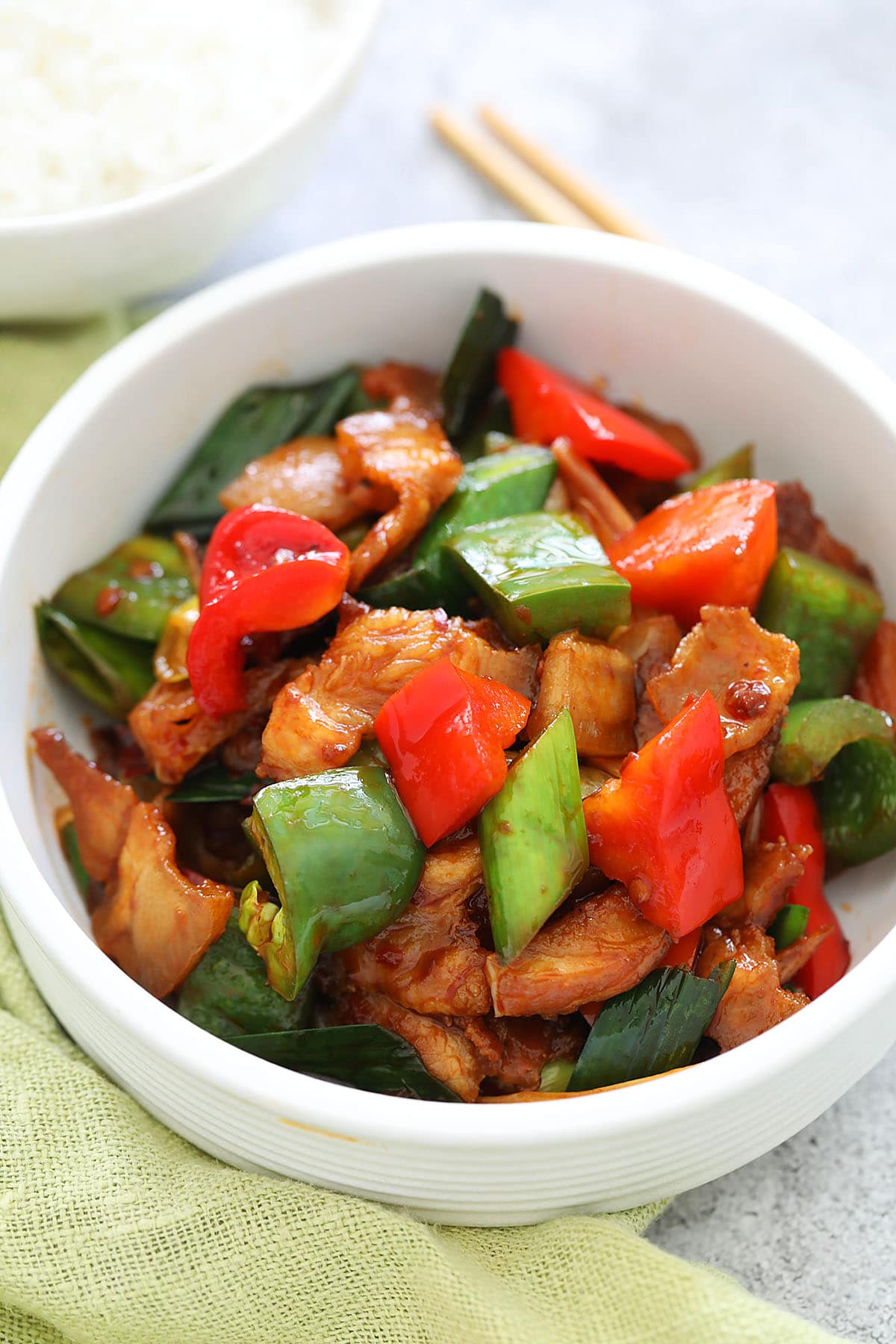
Table of Contents
- Twice Cooked Pork Recipe
- Why You’ll Love This Recipe
- Ingredients You’ll Need
- Shopping Guide: Spicy Doubanjiang
- How To Choose The Perfect Pork Belly
- How To Make Twice Cooked Pork
- Secrets To Perfect Twice-Cooked Pork Belly
- Frequently Asked Questions
- What To Serve With Twice Cooked Pork
- Other Sichuan Recipes You Might Like
- Twice Cooked Pork Recipe
Twice Cooked Pork Recipe
Whenever I go to a Sichuan restaurant, I always order Sichuan twice cooked pork (hui guo rou). I never really thought about what “twice-cooked” or “hui guo” (meaning “returning to wok”) actually meant until I started working on this Chinese twice-cooked pork belly recipe. To get the full scoop, I asked my good friend Mr. Xiong, a restaurateur who specializes in Sichuan cuisine. He explained that the “twice-cooked” process is all about boiling and stir-frying. The pork belly is first boiled and sliced into thin, bacon-like pieces, then stir-fried in a wok to bring out all those delicious flavors.
What I love about this twice cooked pork recipe is how simple it is. You just boil the pork, slice it up, and stir-fry with a few key ingredients, and you’ve got a dish that tastes like it’s from a restaurant. It’s so delicious, you’ll be thanking me after you try it!
Why You’ll Love This Recipe
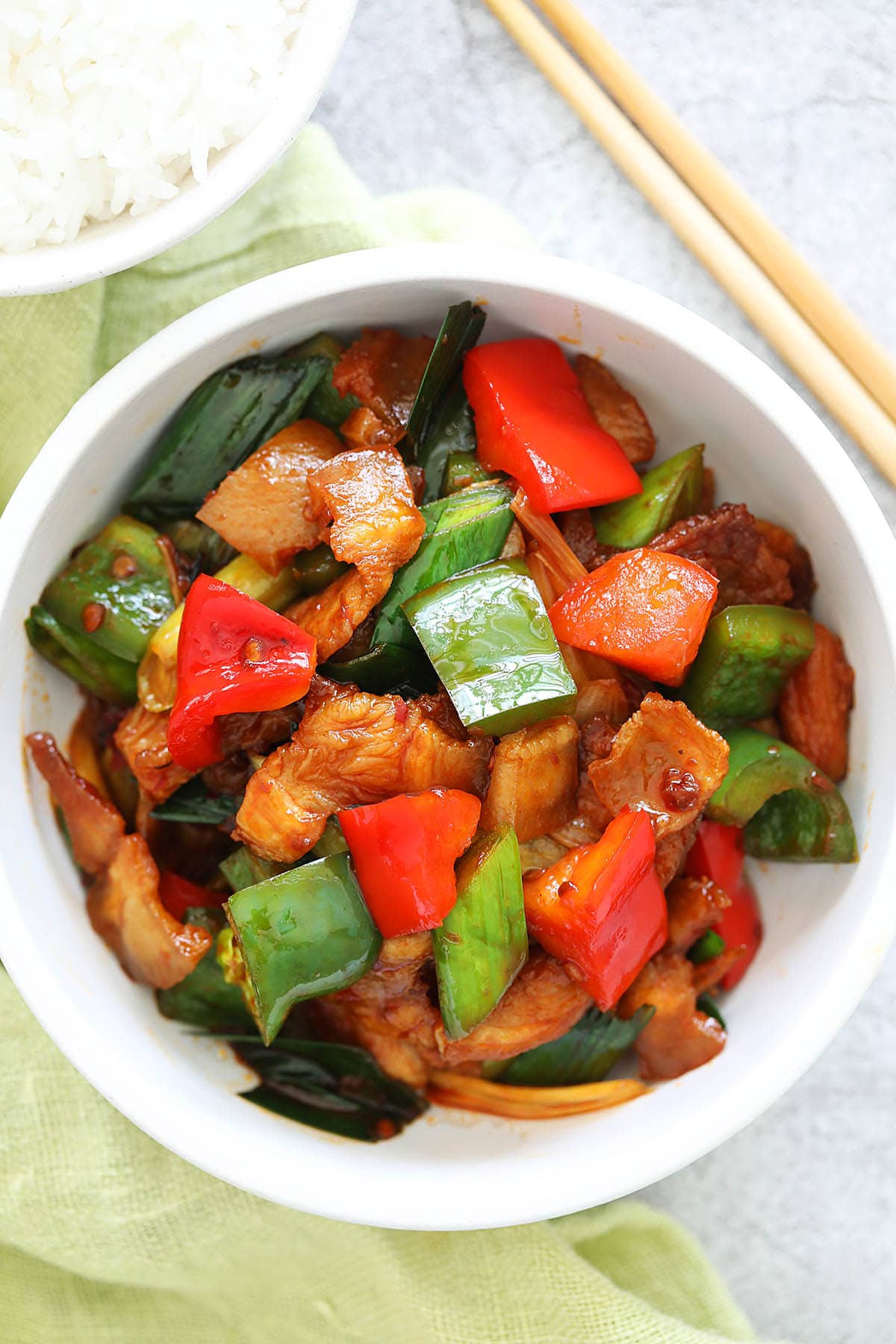
- Restaurant-quality taste. If you love the bold, savory, and slightly spicy flavors of Sichuan cuisine, you’ll get the same delicious taste at home—without waiting for delivery or dealing with complicated ingredients.
- Simple steps, big flavor. This twice-cooked pork recipe is incredibly easy to make. You won’t believe how such simple steps can lead to a dish full of flavor.
- Bursting with flavor in every bite. The pork belly gets perfectly tender during boiling, then stir-fried in a rich, savory sauce. Each bite is juicy, tender, and full of that signature Sichuan punch you crave.
Ingredients You’ll Need
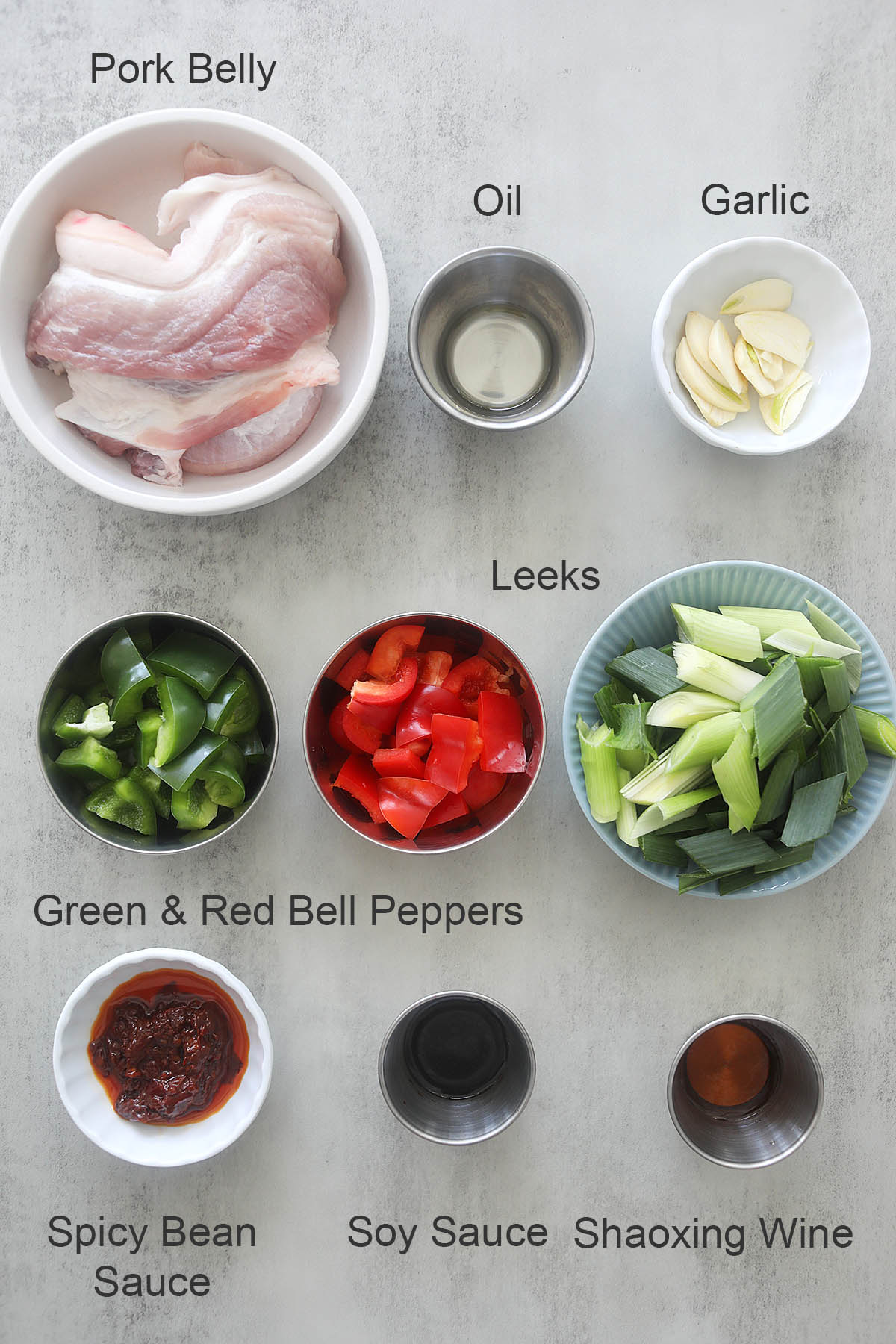
- Pork belly with skin – Go for pork belly with a 50/50 ratio of meat to fat for the best texture. This gives the dish that rich, melt-in-your-mouth tenderness.
- Oil – Use vegetable oil or canola oil.
- Garlic
- Green and red bell pepper – I used green and red bell peppers for that pop of color, but feel free to use any bell peppers you have on hand.
- Leeks – If you don’t have leeks on hand, you can swap them out for green onions (scallions).
- Spicy doubanjiang – The key ingredient for that signature Sichuan flavor and heat.
- Soy sauce
- Shaoxing wine – You can substitute it with Chinese rice wine.
Please refer to the recipe card at the bottom of this post for full details on each ingredient.
Shopping Guide: Spicy Doubanjiang
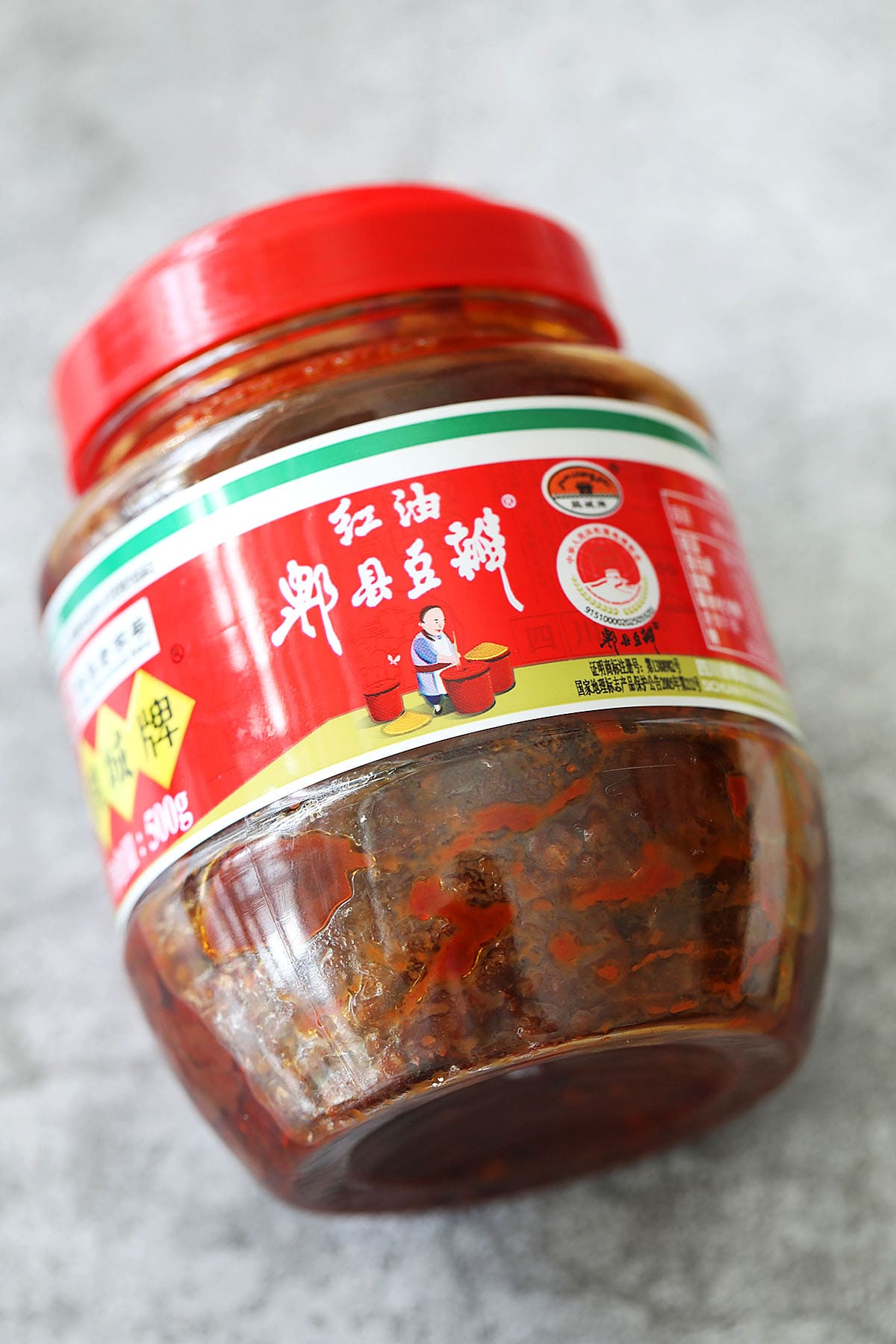
Spicy doubanjiang, also known as spicy bean sauce, is a must-have in Sichuan cooking. Made from fermented broad beans, chili peppers, and other spices, it brings that deep, umami flavor with a spicy kick. While the terms are often used interchangeably, some versions of spicy bean sauce might taste a bit different depending on the brand or region. For the most authentic flavor, try to find the one labeled doubanjiang.
How To Choose The Perfect Pork Belly
When picking pork belly for twice-cooked pork, aim for a cut with an even 50/50 ratio of meat to fat. This balance ensures juicy, tender bites packed with flavor. Look for firm, pink meat with a smooth, creamy white fat layer. Avoid cuts that feel slimy, have a strong smell, or are too fatty or tough. If I’m at the butcher’s, I don’t hesitate to ask for advice—they can even trim it to the perfect thickness for the best results!
How To Make Twice Cooked Pork
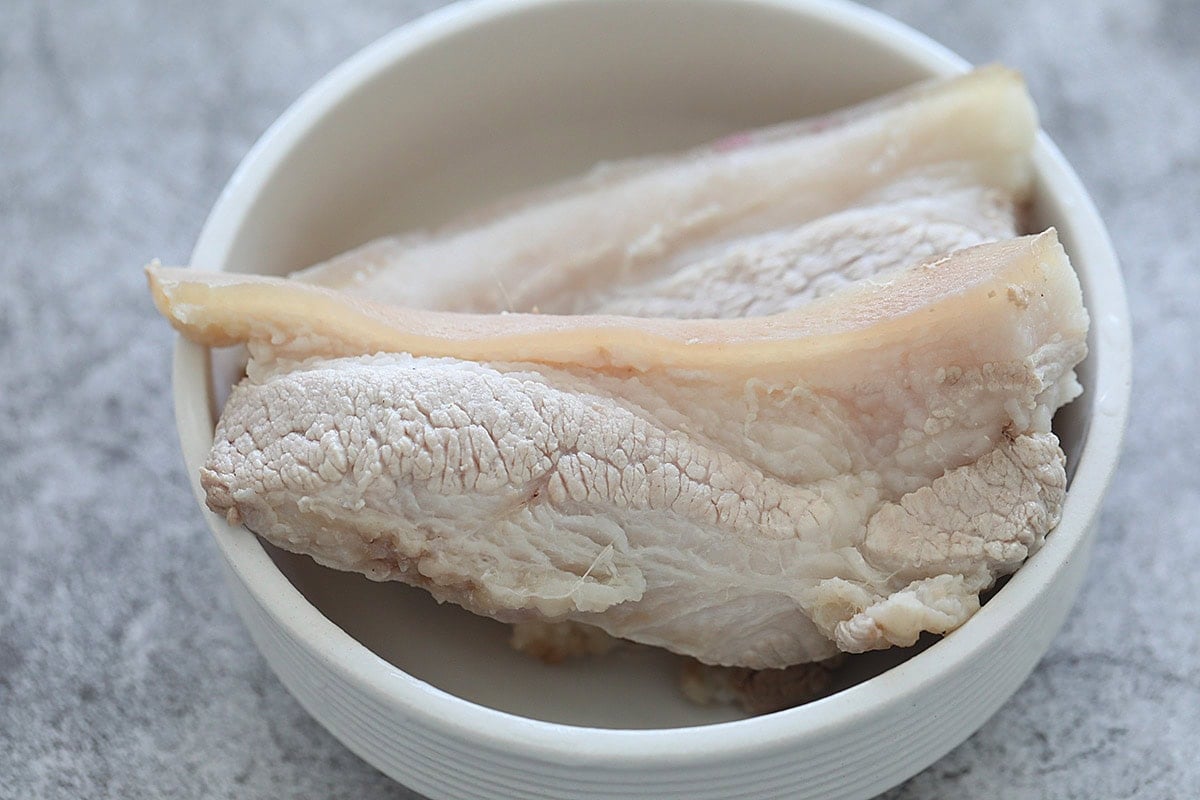
Okay, so first, you want to bring a pot of water to a rolling boil. Then, drop in the pork belly and let it cook for about 10 minutes, just until it’s fully cooked through. Once it’s done, take it out, set it aside, and let it cool down a bit.
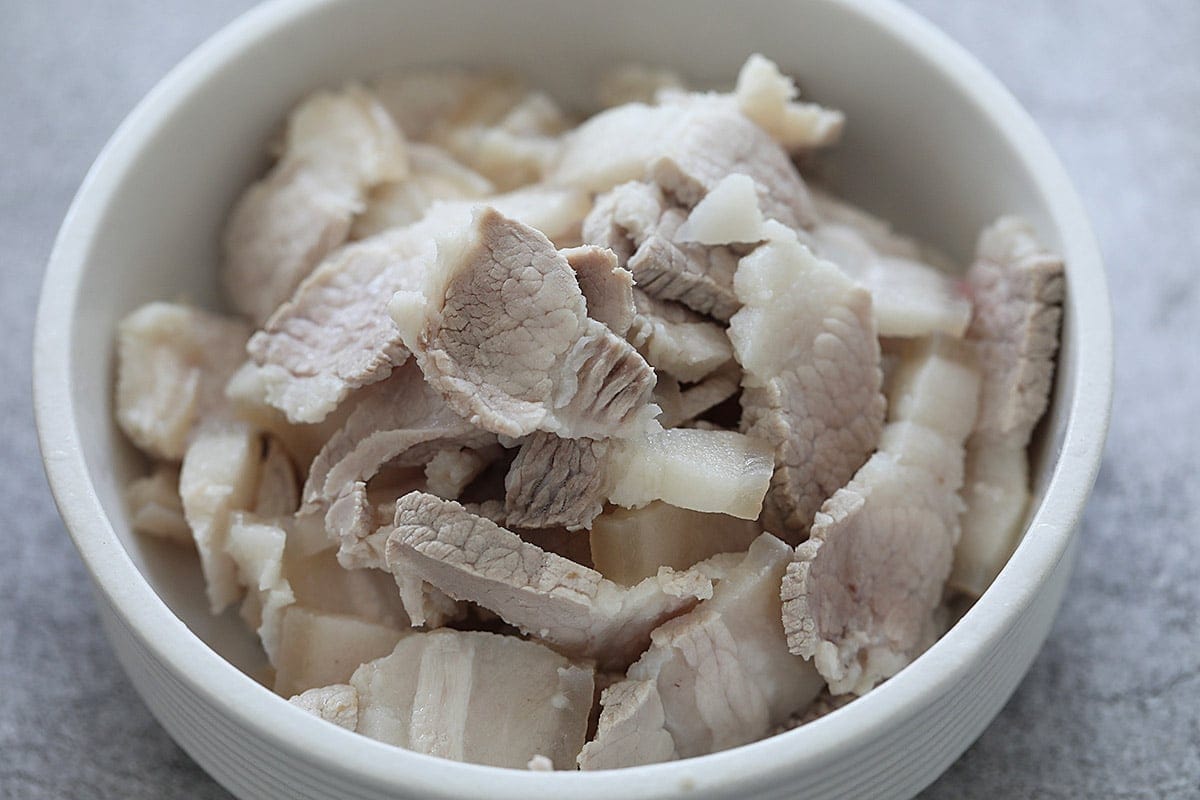
Next, slice the pork belly into thin pieces—like nice little strips—and just set them aside for now.
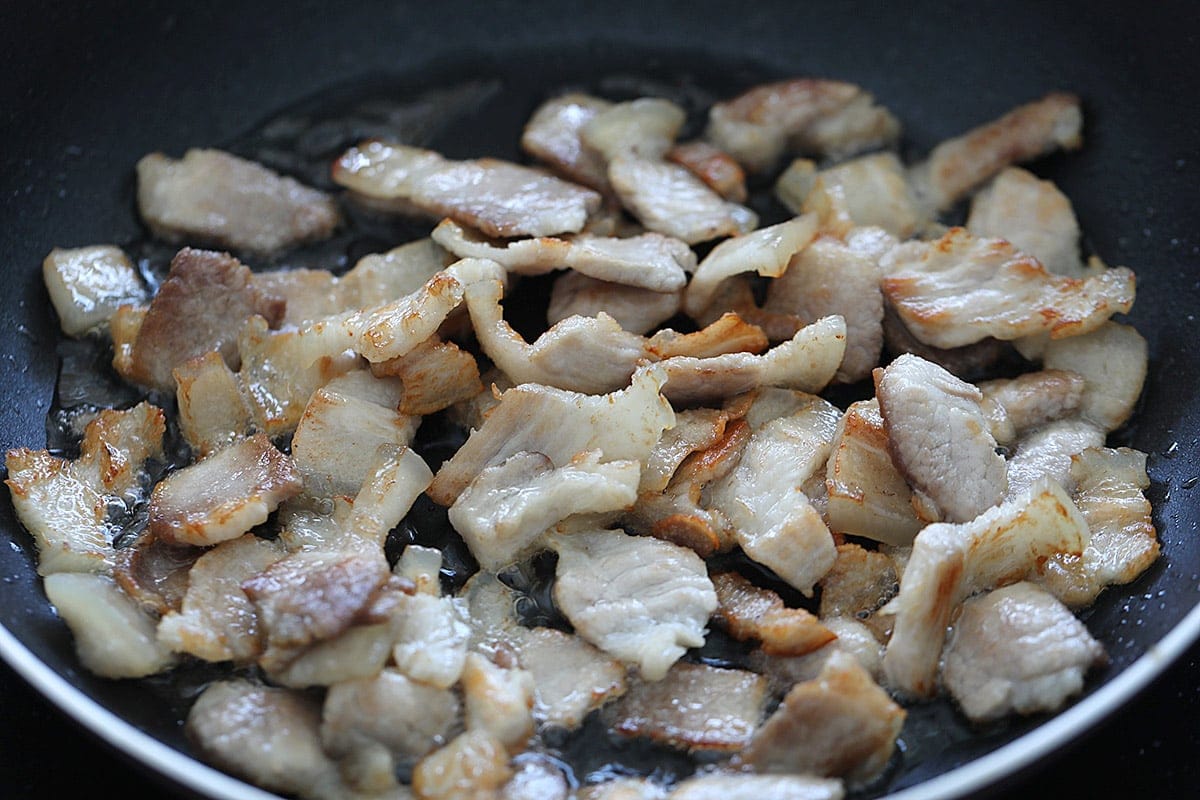
Alright, now heat up some oil in a wok or skillet over medium-high heat. Once it’s hot, toss in the pork belly and cook it until the surface gets a nice, slightly brown color.
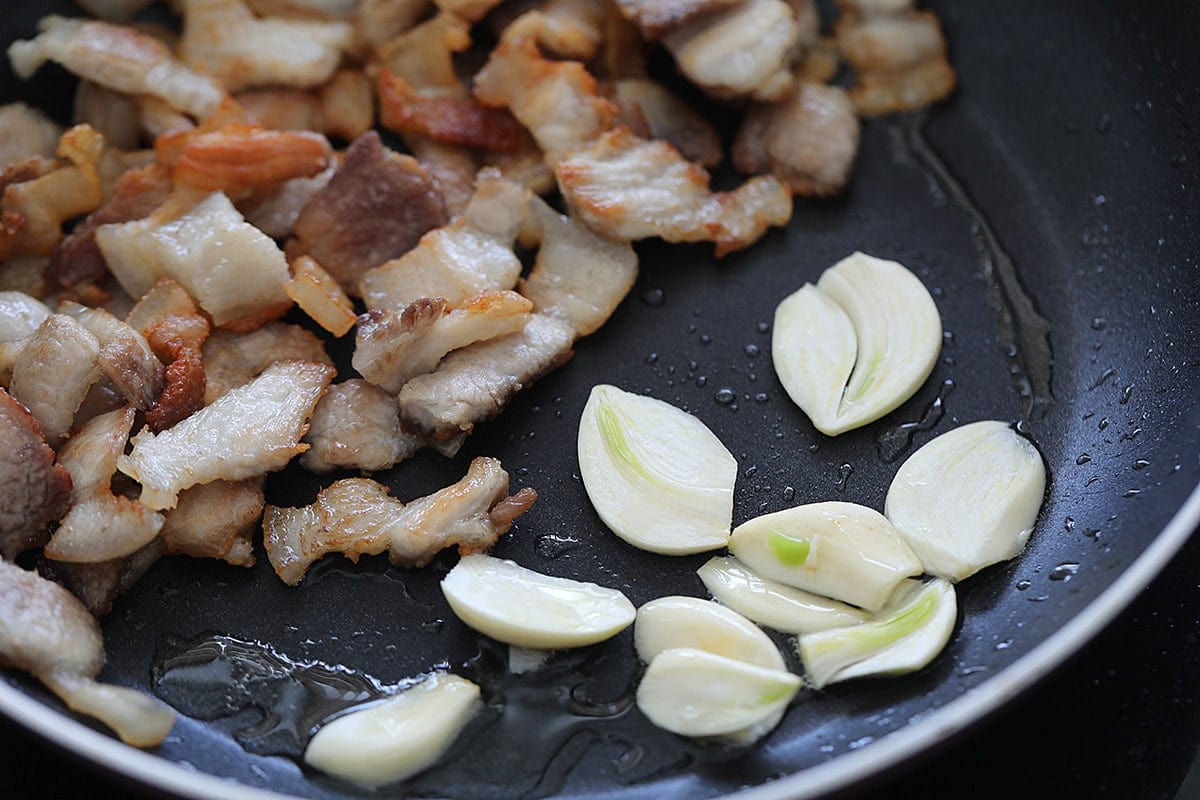
Now, get rid of any extra fat in the pan—don’t worry, you can just toss it. Then, push the pork to one side and throw in the garlic. Give it a good stir so the garlic gets all mixed in with the pork belly.
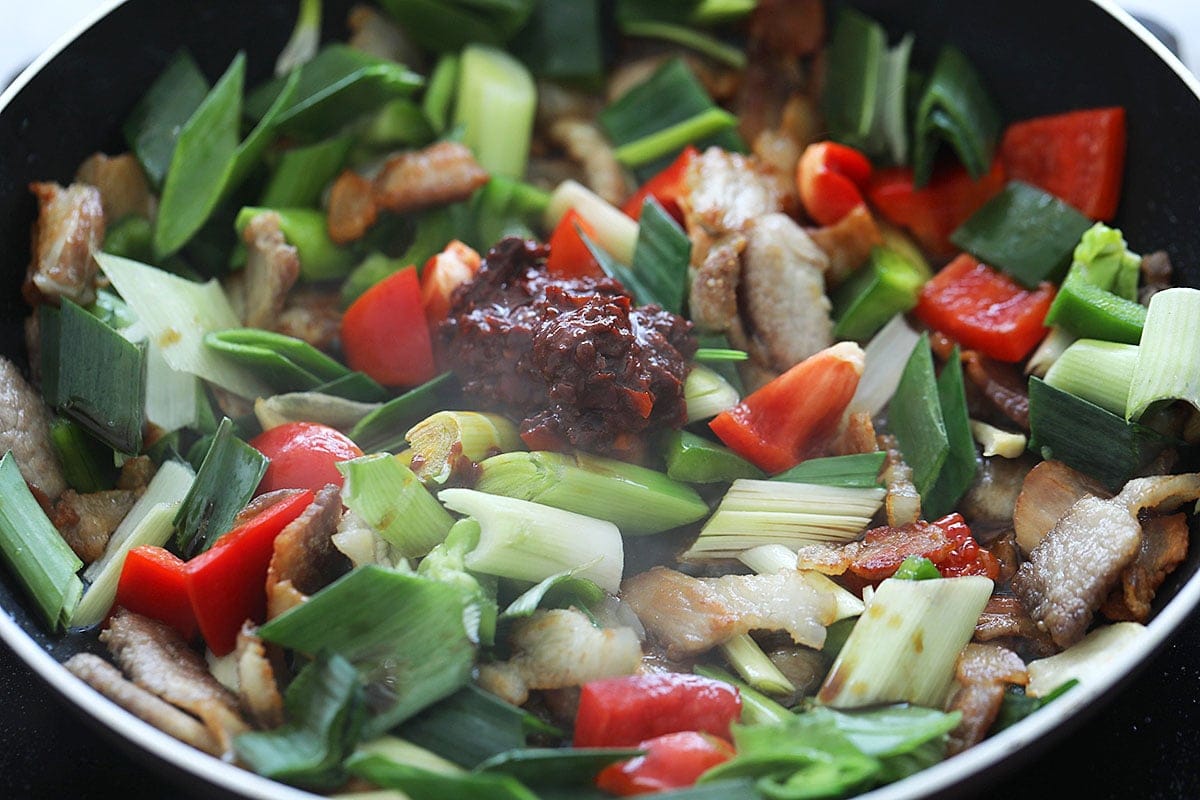
Next, toss in the green and red bell peppers and the leeks. Give it a quick stir for a few seconds. Then, pour in the spicy doubanjiang, soy sauce, and cooking wine. Stir it all together and let those flavors come to life!
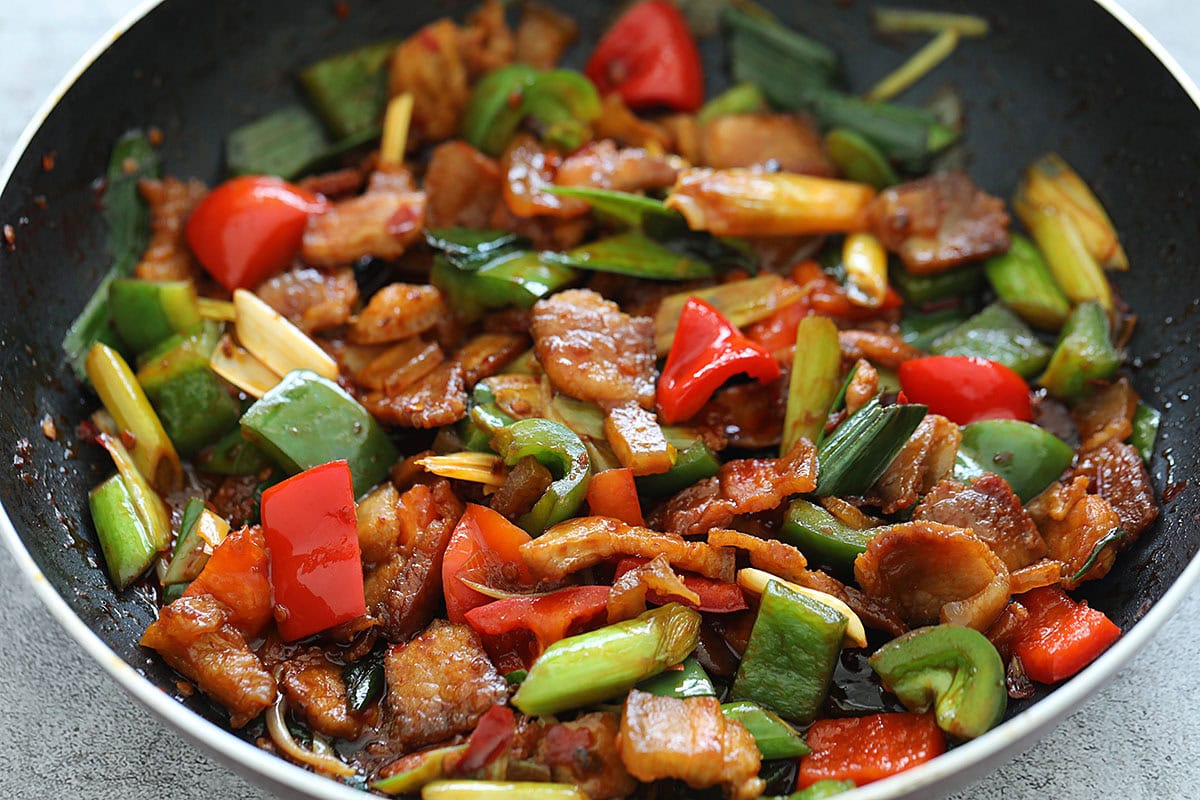
Give everything a good stir to make sure it’s all mixed together, then just dish it out and serve it right away with some steamed rice. Enjoy!
Secrets To Perfect Twice-Cooked Pork Belly
- For the best texture and flavor, go for pork belly with a 50/50 meat-to-fat ratio. This gives you that rich, melt-in-your-mouth experience. If you end up with a cut that’s leaner (like 70% meat, 30% fat), no worries! Just don’t overcook it—once the surface turns a light brown, move on to the next step to keep it juicy and tender.
- Don’t skip the boiling! I know it might seem like an extra step, but trust me, boiling the pork belly first is key to getting that tender, melt-in-your-mouth texture. It helps render out some of the fat and makes stir-frying so much easier. If you don’t boil it long enough, the texture could turn out tougher than you want—and we definitely don’t want that.
- While the pork is boiling, use the time to prep your other ingredients—slice the bell peppers, leeks, and garlic. This way, you’re all set to move straight into stir-frying without any delays!
Frequently Asked Questions
For the best texture and flavor, I recommend using pork belly with skin. The skin adds richness and keeps the pork juicy. If you use skinless pork belly, it’ll still be tasty, but just be careful when cooking it, as it won’t hold together as well.
No, pork belly is a must for twice-cooked pork! It gives the dish that juicy, melt-in-your-mouth texture. Other cuts like pork shoulder or loin won’t give you the same results. Stick with pork belly for the best flavor and tenderness!
After boiling the pork belly, check if it’s fully cooked by piercing it with a fork—it should be tender and easy to slice into thin pieces. If it still feels tough, just give it a little more time in the water until it softens up.
Yes, cabbage works great in this dish! Just add it in when you toss in the bell peppers and leeks.
If you’re not a fan of spice, you can adjust the amount of spicy doubanjiang to your taste. Start with a smaller amount and taste as you go. You can also replace it with a mild bean paste, though it won’t be as authentic. You’ll still get that rich umami flavor, just with less heat.
Leftovers can be stored in an airtight container in the fridge for up to 3 days. To reheat, simply stir-fry in a pan until warmed through, or you can microwave it for a quick meal.
This recipe is 475 calories per serving.
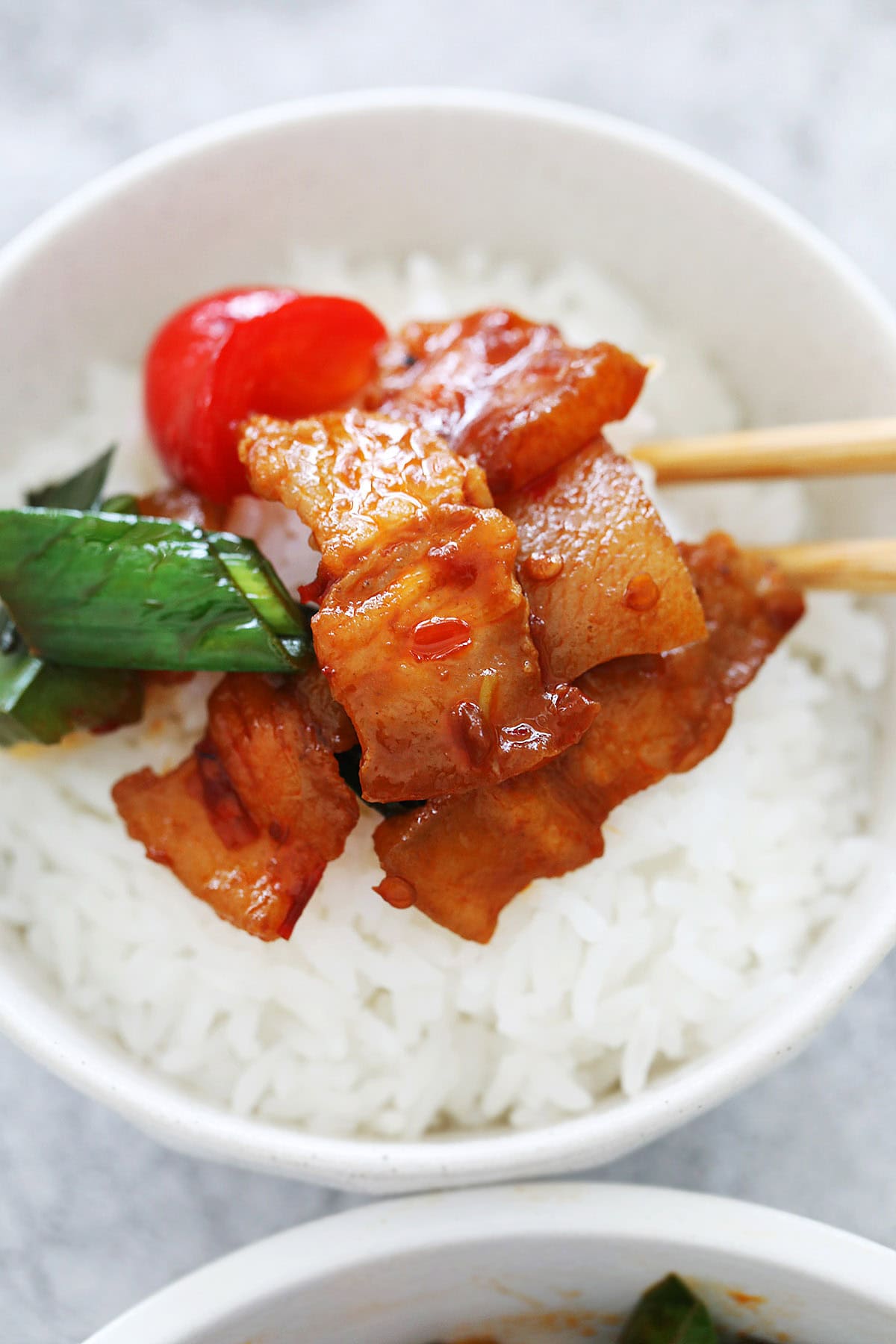
What To Serve With Twice Cooked Pork
For an easy and wholesome weeknight dinner, I recommend the following recipes:
I hope you enjoy this post as much as I do. If you try my recipe, please leave a comment and consider giving it a 5-star rating. For more easy and delicious recipes, explore my Recipe Index, and stay updated by subscribing to my newsletter and following me on Facebook, Pinterest, and Instagram for new updates.
Other Sichuan Recipes You Might Like

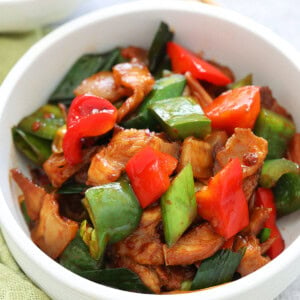
Twice Cooked Pork
Ingredients
- 12 oz pork belly with skin
- 1 teaspoon oil
- 3 cloves garlic, peeled and sliced into pieces
- 1/2 green bell pepper, cut into cubes
- 1/2 red bell pepper, cut into cubes
- 2 stalks leeks, cut diagnocally into 1-in/2.5-cm lengths
- 1 1/2 tablespoons spicy doubanjiang, 豆瓣酱/spicy bean sauce
- 1 tablespoon soy sauce
- 1 tablespoon Shaoxing wine, or Chinese rice wine
Instructions
- Bring a pot of water to a rolling boil. Add the pork belly and cook for 10 minutes, or until fully cooked through. Remove the pork belly, set it aside, and let it cool.
- Slice the pork belly into thin pieces and set them aside.
- Heat the oil in a wok or skillet over medium-high heat. Add the pork belly and cook until the surface turns slightly brown.
- Discard any excess fat from the wok or skillet. Push the pork to one side and then, add the garlic, stirring to combine well with the pork belly.
- Add the green and red bell peppers, leeks, and stir for a few seconds. Then add the spicy doubanjiang, soy sauce, and cooking wine.
- Stir to combine the ingredients well, then dish out and serve immediately with steamed rice.
Video
Notes
- For the best texture and flavor, go for pork belly with a 50/50 meat-to-fat ratio. This gives you that rich, melt-in-your-mouth experience. If you end up with a cut that’s leaner (like 70% meat, 30% fat), no worries! Just don’t overcook it—once the surface turns a light brown, move on to the next step to keep it juicy and tender.
- Don’t skip the boiling! I know it might seem like an extra step, but trust me, boiling the pork belly first is key to getting that tender, melt-in-your-mouth texture. It helps render out some of the fat and makes stir-frying so much easier. If you don’t boil it long enough, the texture could turn out tougher than you want—and we definitely don’t want that.
- While the pork is boiling, use the time to prep your other ingredients—slice the bell peppers, leeks, and garlic. This way, you’re all set to move straight into stir-frying without any delays!
Nutrition
Nutrition information is automatically calculated, so should only be used as an approximation.
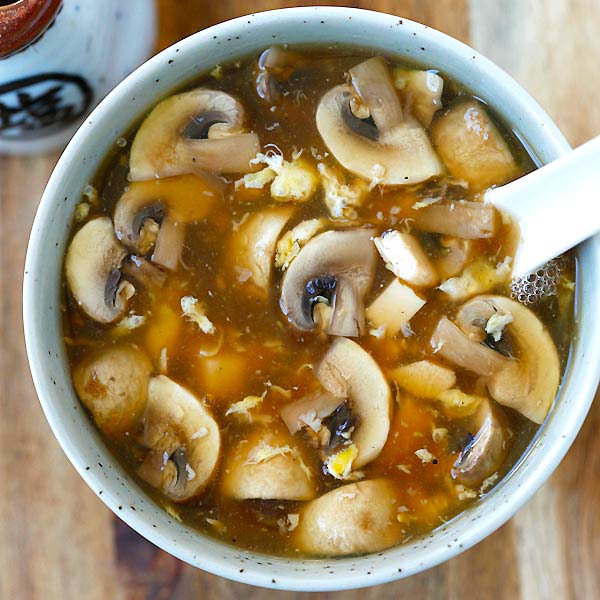
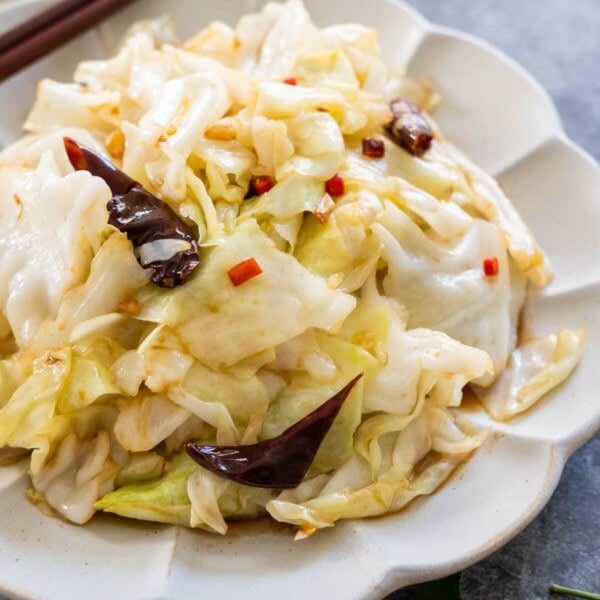

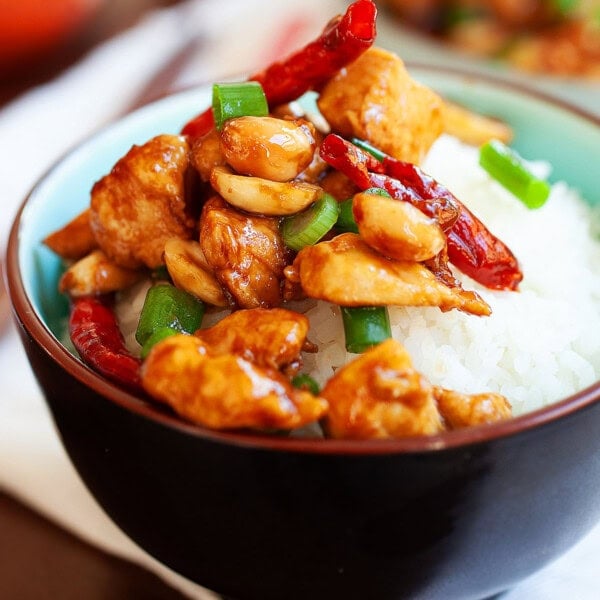






This is a wonderful dish–I’ve been making it for decades using a recipe very similar to yours that my husband brought back from Taiwan in the middle 70s. It’s not on every Chinese restaurant menu–certainly not on any at all in my smaller community–often hiding at the back of one under “chef’s specialties,” or “authentic dishes,” if you can find it. It shares all time favorite status with Cumin Lamb or cumin beef. While the pork belly is succulent and delicious, I frequently make it with either pork loin or tenderloin to cut the fat a little–and because my local supermarket rarely has pork belly. Thanks for the recipe–it will be on my table later this week.
Hi Jan, thanks for your comment and 5 stars rating. Happy cooking soon!